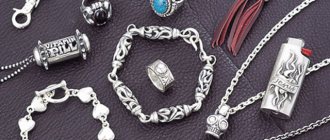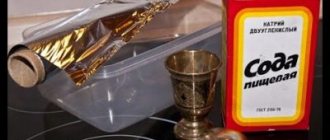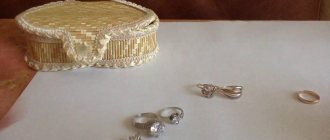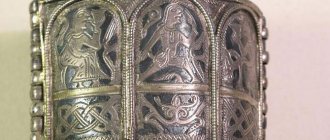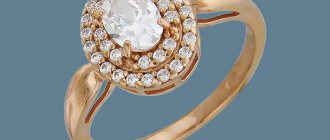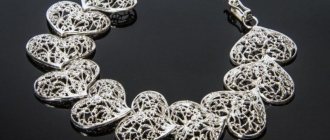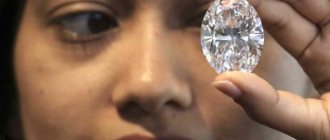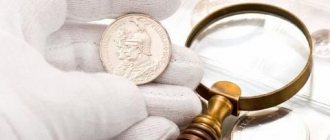Not every family can boast of having silver cutlery, and there are very few owners of complete sets. It would seem that silver is not a very expensive metal - a simple ring can be purchased for only a thousand rubles.
Why is silverware so expensive? And you count how much precious metal it takes to make one silver spoon. Plus work, a brand and other extras - a substantial amount accumulates.
Therefore, often the desire to determine the authenticity of silver spoons is not a whim, but a matter of prestige, the feasibility of financial investments and the characteristics of care. Especially if we are talking about family or any other rare silver.
About silver
Since ancient times, silver has been valued for its beauty and physical qualities. In nature, it is found in the form of nuggets, sometimes reaching enormous sizes; the largest nugget found during smelting yielded 20 tons of pure silver. Unfortunately, most of the silver that can be found is found in combination with other substances, which makes it very difficult to smelt pure metal nuggets. If we talk about the physical properties of silver, then special attention is paid to its ductility; from 1 g of silver the thinnest wire 2 km long is obtained, as well as the fact that this metal is considered precious and is used by jewelers - its ability not to oxidize under the influence of oxygen.
Designations
| Name | Meaning |
| Designation GOST Cyrillic | MNC15-20 |
| Designation GOST Latin | MHTs15-20 |
| Translit | MNTs15-20 |
| By chemical elements | CuNiZn15-20 |
| Name | Meaning |
| Designation GOST Cyrillic | Nickel silver |
| Designation GOST Latin | Heizilbep |
| Translit | Neuzilber |
| By chemical elements | Nieuilsilver |
About cupronickel
Cupronickel is an alloy of copper, nickel and zinc. Externally, this metal is very similar to silver, which is what many take advantage of by selling counterfeits made of cupronickel under the guise of this precious metal. Cupronickel is often used to make dishes and, less commonly, jewelry. But in this case, how to distinguish cupronickel from silver? Reviews from customers and experts say that the first and main rule is to think about where exactly to buy it. This is where the whole process should begin. You will not need to find out how to distinguish silver from cupronickel if the product was purchased at a large jewelry store. He will not allow himself to ruin his reputation by selling counterfeits. It's a different matter for pawn shops and those who want to sell jewelry "from hand", they will most likely sell a fake.
Jewelry alloys: cupronickel, nickel silver, alpaca, Tibetan silver, tombac, brass
Previously, the article “Varieties of jewelry alloys and their properties” was written
Now, as promised, I am writing about jewelry alloys.
What is jewelry alloy? This is any alloy from which jewelry is made (simply costume jewelry), but does not contain precious metals. For the most part, jewelry sellers do not write what kind of alloy this or that piece of jewelry is made from, indicating the composition simply as a jewelry alloy.
There are a great variety of jewelry alloys, so in this article I will describe only a few of them.
Cupronickel is an alloy that, as a rule, consists of 70-80% copper and 30-20% nickel. May contain impurities of silver, iron, zinc, manganese. It has a silvery color with a barely noticeable yellowish tint. If the alloy contains silver, it is very difficult to distinguish it from silver jewelry. Cupronickel has been known since the 3rd century BC; in those distant times, the alloy of copper and nickel was called “white copper”. In fact, this alloy is called cupronickel only in Russia and the countries of the former USSR. In other countries, this alloy is called “German silver” (in English German silver), since the Germans made a lot of jewelry, household items, and even minted coins from this alloy. This alloy was also called “poor man’s silver.”
Who doesn’t know the good old classics of Soviet jewelry - turquoise or amber in cupronickel? Or enamel in cupronickel, made using filigree or filigree techniques. Cupronickel alloy was widely and successfully used in the USSR.
Unlike silver, cupronickel is a cheaper, but at the same time durable alloy, does not darken, does not corrode and is easy to clean.
Set of the Soviet period. Cupronickel with Ural malachite.
Set of the Soviet period. Cupronickel with Ural charoite.
Filigree products made from cupronickel are often silvered and plated with gold. On costume jewelry of the Soviet period you can find the mark MNTs, which means copper-nickel-zinc alloy. This is only the composition of the alloy, but not its ratio. The MNC mark could be found on both cupronickel and nickel silver.
Nickel silver (translated as new silver) is very similar in appearance and composition to cupronickel, but this alloy is cheaper than cupronickel, it contains about 40% copper, up to 15% nickel and up to 45% zinc. Often, when making it, exact proportions are not followed and various other metals are added to the composition of nickel silver. Nickel silver is a durable and elastic alloy. May have a blue or greenish tint. Nickel silver, as well as cupronickel, is widely used in the manufacture of jewelry with filigree and enamel. As a rule, many sellers of vintage jewelry do not distinguish between nickel silver and nickel silver, choosing to describe the jewelry at random, because... Visually it is very difficult to distinguish these two alloys.
Icon pendants were and are often made from nickel silver.
Fruit plate made of nickel silver from the early Soviet period with hand-painted ceramics.
Vintage nickel silver belt buckle with natural stones, South America.
Unlike cupronickel, they often try to plate nickel silver in cutlery so that there is no metallic taste in jewelry, because... Nickel is considered an allergenic metal, and silver plating makes nickel silver jewelry hypoallergenic.
Alpaca (alpacca) - the alloy contains 60% copper, 20% nickel, 20% zinc and 5% tin. In essence, alpaca and nickel silver are the same thing. Nickel silver comes from Europe, and alpaca alloy is of Mexican origin. Both of these alloys were a kind of replacement for silver, but were discovered in different parts of the world. Silver-colored alpaca alloy has a slightly gray tint. Jewelry made from this alloy has a slight patina appearance.
Ethnic earrings, Mexico, alpaca, abalone insert.
Ethnic beads, alpaca, amber.
Nowadays, some “craftsmen” fake vintage jewelry from this alloy.
On jewelry made from this alloy in South and Central America you can find the Alpaca or Alpaca mark.
Tibetan silver is the most mysterious of all alloys. I specifically included this alloy in the topic of jewelry alloys, not jewelry. All kinds of jewelry made from Tibetan silver have recently become quite a popular and widespread product in online stores. They sell supposedly ancient Tibetan jewelry with natural stones. The jewelry looks attractive in photographs, with a touch of patina, made in ethnic style. So... Indeed, there was an alloy known as Tibetan silver. It was used by the Tibetans as a material for jewelry and contained up to 30% real silver. In appearance, a product made from such an alloy resembles an “aged” decoration. Real Tibetan antique silver items are now almost impossible to find; they cost quite a lot of money.
Real Buddhist rosary made of silver. The photo was small, so I had to enlarge it using a white sheet, but I simply could not help but show this unique thing.
Vintage authentic Tibetan women's jewelry, silver, turquoise, coral.
Authentic antique Chinese bracelet, silver, coral.
The words “Tibetan silver” these days in online stores mean only the silvery color of the metal and a certain design of jewelry that replicates the jewelry of the indigenous Tibetan peoples. There is not an ounce of silver in this alloy; at best it will be plated with silver.
Personally, I would not buy or recommend jewelry made from such an alloy for one simple reason - its composition is unknown.
Jewelry made from the so-called Tibetan silver of our time.
I would not like to scare my dear reader, but after traveling to China, I am very careful when purchasing any Chinese antiques. But that's a different story... 
Tombac (some call tombak from the French tombac) is a copper alloy containing 10-12% zinc. External properties are very similar to gold. This is a ductile and anti-corrosion alloy that can be well coated with enamel or gold plated.
Copper alloys with a zinc content of 10-30% are called semi-tombacs. In Europe, tombac was first used by the London watchmaker Christopher Pinchbecker (at the end of the 16th - beginning of the 17th century), but the alloy is the oldest, it was found in excavations in South American pre-Columbian civilizations. Tompak was used for the manufacture of watch movements, watch chains, and also in costume jewelry to imitate gold.
Antique brooches with Czech garnets (pyropes), tombac.
Pendants with photographs, Germany, early twentieth century, gold-plated tombac.
Sometimes tombak is called brass, and brass is called tombac; at first glance, these alloys are almost impossible to distinguish, and their composition is very similar.
At the modern flea market, tombak is most often found in ancient Czech brooches with pyropes (garnets), badges/awards/orders and in interior items.
Brass is called an eternal metal. After all, it is durable and wear-resistant. In fact, it is an alloy of copper (50%) and zinc with the addition of tin, manganese, and nickel. The alloy has a noble yellow color. Tompak, in its essence, as I wrote earlier, is a type of brass.
In the encyclopedic dictionary of F.A. Brockhaus and I.A. Efron, brass is called yellow copper, and in English it is written like that - yellow brass, which literally translates as yellow copper.
Victorian portrait brooch, gilt brass.
Antique brooch with colored enamel and rose quartz, brass.
Vintage brooch, brass, enamel, varnish.
Over time, brass jewelry will change color and acquire a patina; the shades and intensity of the changes depend on the composition of the alloy, on the acidity of the skin with which they come into contact, as well as on the environment. If you care for brass products correctly and in a timely manner, they will (I’m not afraid to say this) retain their attractiveness for centuries. At the beginning of the 20th century and earlier, most brass jewelry was covered with gold.
Victorian hat pin, brass and gilt.
Brass grades L68 and L62 are often used as training material for novice jewelers. The thing is that the mechanical properties of these materials are similar to 583 gold. However, this feature of brass is also well known to scammers who make fake “gold” jewelry from it.
A modern bracelet using stamped brass elements.
Interesting fact. Once upon a time in Rus', brass products were exchanged for sable furs. The price was set simply - the buyer filled the brass dishes to the brim with sable skins and gave them to the seller.
To be continued. In the next publication: Monel, silumin, spiater, brosa and much more.
How to distinguish silver from other metals
Most often, a fake can be found on vacation, for example, in Egypt or Thailand. In such places, jewelry is often bought at markets. Of course, it's worth trying out the local flavor, but it can be too expensive if you are gullible. The easiest way to determine if silver is real is to heat the item, for example, by rubbing it on your hand, silver has a high thermal conductivity and will heat up much faster than any other metal. There are other ways to distinguish silver from other metals and cupronickel, using a magnet, needle or chalk.
Identifying real metal
To understand how to distinguish silver from other metals, you need to clearly understand the main characteristics of the imitations that are so often passed off as silver. It becomes clear that modern jewelry factories and industrial factories conduct careful control and do not allow silver of dubious quality to enter the market. They all work in accordance with certain standards and GOSTs, so you don’t have to worry about quality when purchasing silver products from reliable places and trusted jewelry stores.
Tactile method
There are several tactile ways to distinguish silver from cupronickel and other fakes. One of them was described above, namely, to heat the product. But, in addition to temperature, after heating an object by rubbing it with your hand, you should pay attention to the skin. If there are no stains left on it, most likely it is high-quality silver, but dark marks remaining on the skin indicate that the product contains too much zinc, which is harmful to the body, and you should not wear such jewelry or use such utensils.
The authenticity of silver can also be determined by the weight of the item: silver is much heavier than other metals. This task is best handled by a professional, but an ordinary person can determine its authenticity by simply comparing the weight of the item with a similar silver one.
Secrets of transmutation
In all centuries, scientists, not only chemists, but also physicists, as well as medieval alchemists, struggled with the question: is it even possible to scientifically obtain another metal similar to gold? Atomic scientists have proven that at the atomic level, one metal can acquire the properties of another through the transmutation of chemical elements located next to each other on the periodic table (for example, mercury and platinum can, as a result of a reaction, transform into stable gold).
By the way, this is one of the very first and most reliable ways to obtain gold from metal. Back in the Middle Ages, alchemists cheated like this in front of kings and emperors. Gold powder dissolved in mercury, then the mercury evaporated and a gold bar remained.
All other ways to obtain gold by manipulating various metals (iron, tin, lead) can only lead to the production of an alloy with a small admixture of gold. Most often, this is exactly what scammers achieve, whose main task is to make the fake as high quality as possible.
Some scientist even jokingly summed up the “scientific” basis for the similarity of bronze to gold. He said that if you add up the charges of the nuclei of the alloy components (29 for copper and 50 for tin), you will certainly get “gold”.
However, in order not to get into trouble when buying real gold jewelry, it is advisable to know what alloys form a metal similar to gold. Although even experts cannot always distinguish a fake, especially if gold is actually added to the alloy. In this case, they say that this is gold of a very low standard. .
Try
Also, one of the simplest ways to check the authenticity of metal, which can be used right in the store, is to check the sample. If a fake has one, it will be erased or unclear. The “MNC” symbol, which stands for magnesium, nickel, zinc - the composition of the cupronickel alloy, can also serve as a difference between silver and cupronickel. Products from different countries may have different markings, but not a single manufacturing country has a standard with simply the inscription “925”; there are always other signs - images or inscriptions; it is with fakes that the standard is most often found only in the form of a number. This will help those who are wondering how to distinguish cupronickel from silver, but did not have any available means, such as chalk, with them.
What are the types of alloys?
The name “cupronickel” refers to a whole group that includes about 65 types of metal alloys. Moreover, each cupronickel product must have its own designation. Classic labeling contains information about the constituent ingredients of the material and their percentage.
The most common types of alloys (technical):
- MH19 – contains 81% copper element (M), 19% cobalt and nickel, as well as some iron and manganese;
- MNZhMts30-1-1 – contains 68% copper element, 1% manganese (Mc), 1% iron (F) and 30% cobalt and nickel (N);
- MNZHMts10-1-1;
- MH25;
- MH16.
Several years ago, the group of cupronickel alloys also included silver-plated brass, but this classification was erroneous. Brass contains zinc and copper, while cupronickel contains nickel. Depending on its content, the following types of material are distinguished:
- nickelselber – at least 15% nickel;
- constantan – about 41%;
- Monel – about 67%.
The high cost of the nickel element makes nickel silver of the Monel type the most expensive alloy of the group.
Needle
Another common way to counterfeit silver jewelry or tableware is to coat copper or other metal with a thin layer of silver. In this case, a regular needle can help distinguish a fake. It is enough to scratch the product with it, and if dark metal appears inside, then it is definitely a fake. However, this method is not suitable for those who are afraid of ruining the appearance of the item.
CARIES OF MILK TEETH
Why are some children susceptible to dental caries, while others are not? Factors:
- genetic predisposition;
- poor quality nutrition;
- poor oral hygiene;
- frequent infection;
- Abuse of sweets.
Removing carious teeth is not a solution, since the absence of teeth in the jaw negatively affects the formation of the bite.
The enamel of baby teeth is not saturated with minerals, like that of permanent molars. The passion for sweets has a bad effect on the protective layer, and the tooth is affected by caries. A child’s teeth need constant strengthening and protection.
Therefore, parents should be attentive to the health of their child’s teeth, regularly show him to the dentist and take preventive measures - silvering of teeth.
Iodine
You can check the authenticity with another means available at any pharmacy, namely iodine. Cupronickel and other metals do not change their appearance under the influence of iodine; low-quality silver, with a large percentage of zinc impurities, will change its color to blue, but real silver, as soon as iodine is dropped on it, will turn black. But this method is also undesirable for those who do not know how to clean silver. But don’t despair, there’s plenty of advice on the Internet on how to do this. The most reliable way is to use a special cleaning cloth or silver cleaning solution.
Cleaning and storage
Devices made of copper-nickel alloys are durable and easy to use. But only with proper care and regular cleaning.
Some useful tips:
- It is advisable to wash dishes by hand, avoiding “cooperation” with the dishwasher. Under the influence of aggressive detergents and high temperatures, even such durable metal can become stained;
- After washing, devices are wiped dry, without leaving them wet in the dryer;
- dishes that are taken out of the cabinet only on special occasions are stored in containers or boxes, excluding contact with humid air in the kitchen;
- Do not use abrasive powders, chlorine-containing compounds and hard scourers (sponges) for washing. The best option is a warm soapy solution.
To remove dark spots, use a soda solution, crushed chalk, or tooth powder.
Chalk
Another method that can be used in a jewelry store before purchasing a piece is to rub it with regular chalk. When it comes into contact with silver, the chalk becomes covered with a black coating. Unfortunately, this method will not help if the fake is coated with a layer of silver.
And one more rule that is worth taking note when coming to a jewelry store or, especially, buying jewelry secondhand: before purchasing a product, you should find out the silver rate. Information like this can be very useful if you know how to use it.
It is important to remember that the price of jewelry or any other silver product cannot be less than or equal to the cost of silver of the corresponding weight. The price quoted by the seller also includes labor. If a seller offers a heavy ring or pendant for next to nothing, it is one hundred percent fake. Accuracy and attentiveness when choosing purchases will help you avoid unnecessary expenses.
Pricing
The cost of cupronickel alloys is determined based on the quotations of copper and nickel on world non-ferrous metals exchanges. Basically, scrap metal collection points are oriented towards the London Stock Exchange.
The most valuable are cupronickel, which has a higher nickel content in its composition. This is due to its high cost.
Particular attention should be paid to the condition of the surface when handing over nickel silver scrap. Traces from rust removal, and even more so its presence, greatly reduces the cost of scrap in the non-ferrous metals market.
The form of rental is also important. The cupronickel circle is considered the most valuable, because with the same weight, the cupronickel pipe takes up more space during transportation. Accordingly, the costs of collection points for moving scrap metal increase.
The volume of supplies also affects the cost indicator. As a rule, metal collectors make a markup when working with cupronickel scrap over 50 kilograms. This happens due to the reduction in time for selling products: the more scrap, the faster it can be sent for processing.
Cupronickel costs less than pure metals. The reason for this is the high cost of processing: separating the original components from each other. As of October 2022, the average price for cupronickel per gram in Russia is 0.2 rubles.
CONTRAINDICATIONS
Firstly, the procedure is not performed if there is deep damage to the dental tissue. The composition of the drug is not intended to affect the internal tissues of the molar and may cause harm instead of benefit.
Secondly, the procedure is not carried out if there are existing pathologies of dental tissue or allergies to medicinal substances included in the solution.
Thirdly, coverage is not possible for existing somatic pathologies.
Fourthly, age from three years. Older patients undergo different treatment, for example, using a drill and placing a filling.
ALTERNATIVE
Silvering of teeth is an outdated, but still popular method of teeth preservation in Russia. What can replace silver plating? For this, dentists have developed alternative methods:
- remineralization;
- fluoridation;
- ozonation;
- fissure sealing.
REMINERALIZATION
Remineralization can be done either in the dentist's office or at home. A special solution is applied to the surface of the molars, which strengthens the enamel structure. The composition of remineralizing mixtures includes a fluoride component. Dental tissue is saturated with minerals and completely restores its structure. The disadvantage of the technique is the age of the child - only after six years.
FLUORIDATION
Fluoridation of teeth can be deep and superficial. Surface fluoridation coats the enamel with a thin protective film. Deep fluoridation using electrophoresis achieves a different goal - strengthening enamel structures. This method can defeat the onset of caries, as it fills the destroyed cavity with structural material. Compared to silvering, this is a more radical method of protecting molars from caries.
Advantage of fluoridation:
- replaces silvering;
- strengthens the enamel structure;
- fills micro cracks in enamel;
- does not change the color of teeth;
- carried out no more than once every 6 months;
- restores enamel after carious lesions;
- indicated for children from two years old.
Deep fluoridation protects molars for a year, then the procedure is repeated. Of course, there are contraindications to fluoridation. For example, fluoride intolerance or excess fluoride in drinking water. Also a contraindication is multiple carious lesions of molars.
OZONATION
Ozonation is carried out by a dentist. The essence of the procedure is to prevent carious lesions of molars and destroy putrefactive bacteria in the oral cavity. The oral cavity is completely cleansed of putrefactive bacteria, and then the teeth are coated with a protective substance. Ozonation can completely replace remineralization and silvering if caries has just begun.
SEALING
Fissure sealing with tension can be called a protective procedure, since only the chewing side of the molars is subject to coating. A special solution is applied to the chewing grooves, which prevents the destruction of the enamel. Sealing is carried out for both therapeutic and preventive purposes.
PSYCHOLOGICAL PROBLEM
Some children may react negatively to changes in enamel color after silvering. Therefore, it is important to have a preliminary conversation and explain to the baby that dark teeth are better than sick ones. If you clearly tell your child that after plating you won’t have to drill your teeth with a drill, he will be able to understand the importance of silvering.
You can convince the baby that now he will not have black teeth, but silver - precious ones. Many children manage to overcome the ridicule of their peers and become confident in the correctness of their choice. After this, the situation changes, and peers stop pointing fingers at black teeth.
